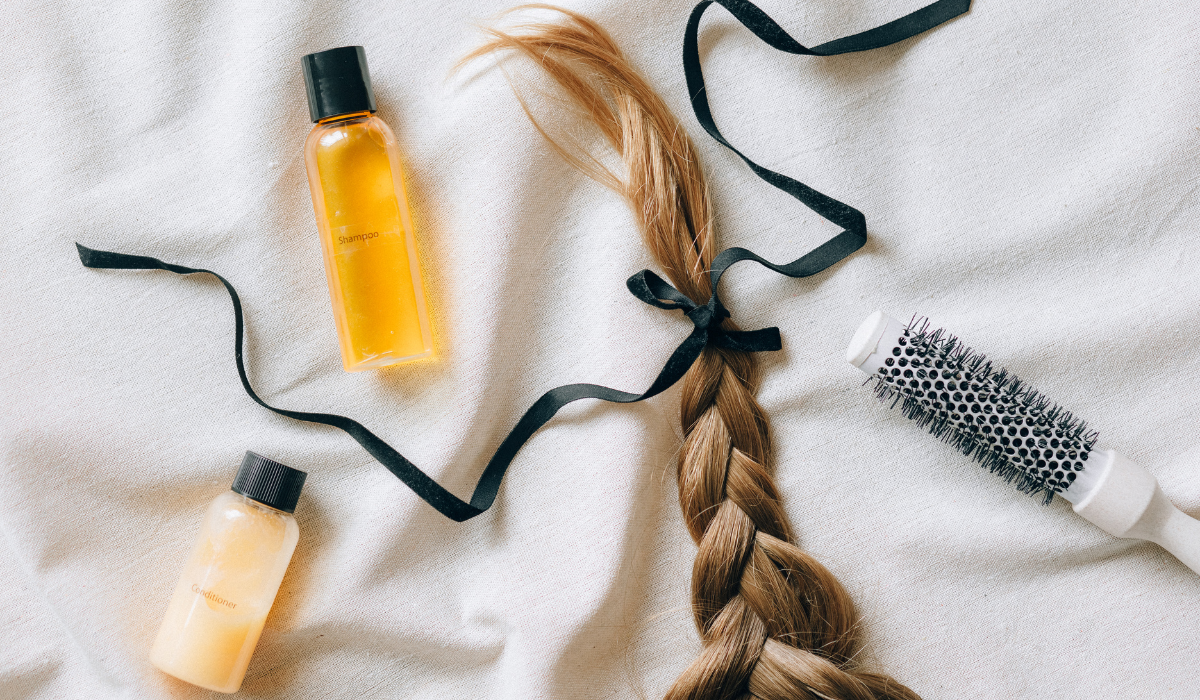1. Choose the Right Shampoo and Conditioner
- Knowing Your Hair Type: Various hair types need different ingredients. For example, fine hair would require light-weight, volumizing shampoos that do not weigh down that hair in question, while thick or curly hair requires moisture. Choosing the right shampoo and conditioner is one of the top 10 hair care tips for achieving the best results.
- Sulfate-Free Formulations: Sulfates, commonly in shampoos, are actually pretty harsh detergents that strip natural oils from hair. For people with sensitive or dry scalps, sulfate-free shampoos generally cause less irritation and retain more moisture.
- Concentrate Conditioner: Apply conditioner to the ends of your hair as those tend to get the driest. Follow through by rinsing with cool water to help close up the hair cuticle, holding more moisture for shine. This is another important tip from the 10 hair care tips list.
2. Minimize Heat Styling
- Why Heat Damages Hair: High heat damages the hair natural protein, making hair more prone to breaking off, frizz, or split ends
- Use of Heat Protectant: before styling starts, make a spritz or cream application of it. It forms a protective cover that covers your hair, thus lessening the effect of direct heat.
- Alternative to Heat: Air-drying or embracing the styling techniques of no-heat, for example, braiding your damp hair for waves. If one has to employ heat, then it must be within 300°F and 350°F range for more beneficial styling.
3. Avoid Over-washing Your Hair
- Regulation of Natural Oils: Over-washing tends to strip the scalp of its natural oils leading to dryness and may promote oil overproduction due to the scalp attempting to find ways to regulate the loss.
- Finding Your Wash Schedule: Change your shampooing habits to fit your kind of hair type; if you have oily hair, a general rule would be to be washed daily, while others have drier hair types that might get washed 2-3 times a week.
- Dry Shampoo Application: If you feel you are getting oily before you get the chance to wash your hair, a dry shampoo may come in pretty handy to absorb excess oil. Ensure that you don’t get too reliant on this as this may clog hair follicles after some time.
4. Using Hair Oil Regularly
- Choose the Right Oil: There are oils that work in different ways. Coconut works inside to condition, argan to let the shine come out, and jojoba to moisturize but not weigh down.
- Use it: Warm several drops in the palms, massage a little into the scalp to get blood flow going to help stimulate hair growth, then work oil down the lengths to combat dryness and split ends. Regular use of hair oil is a key hair care tips.
- Frequency: Once or twice in a week would suffice for most of us. However, if one has thicker and curlier hair, it needs to be oiled regularly to achieve moisture balance.
5. Balanced Diet for Hair to Gain Strength
- Vitamins and Nutrients: Hair requires biotin, vitamin E, and iron to become strong. Biotin available in the yolk of the egg promotes keratin, which is the key requirement for hair building. Iron, available in green leafy vegetables may help enhance oxygenated blood delivery to the hair roots.
- Omega-3 Fatty Acids: Omega-3s, found in fish, walnuts, and flaxseed assist in hydrating the scalp and the hair, thereby controlling inflammation, which may further delay hair growth.
- Hydration: Hydration also plays a very crucial role in the health of the hair, as dehydrated hair becomes brittle and easily breakable.
6. Use a Wide-Toothed Comb on Wet Hair
- Why hair breaks when wet: When wet, hair tends to swell. This makes hair more elastic and even easier to stretch. Therefore, when tangled, tugging on wet hair may lead to breakage and further splitting the ends.
- Proper Technique: Begin detangling from the hair ends up to the roots. This is where breakage will be avoided as it starts with small tangles before pulling it down from the roots.
- Avoid Using Fine-Toothed Combs: Fine-toothed combs pull too much on knots and tangles causing damage. Wide-toothed combs or detangling brushes are gentle on wet hair.
7. Regular Haircuts
- Advantages of Trims Split ends move up the hair shaft when not trimmed, therefore causing more breaking and coarse feel. Trims keep your hair looking neat and healthy.
- How Often to Trim: Most hair types require trims every 6-8 weeks. If you are growing your hair, the loss of a quarter inch of hair regularly will still be promoted with healthy growth.
- DIY Trimming: This is possible if salon visits are not convenient. There are easy cutting techniques that can be learned, or you can use split-end removal scissors designed to do so.
8. Solar Damage Protection to Hair
- UV Radiation and Hair: UV radiations create tissue damage in skin; similarly, it dries up and weakens hair-cutting especially colored one. Increased chances of dehydration, frizz, and color loss with long exposures.
- Protective Preparations: Some in-conditioners or leave-in sprays already carry the sun-blockening component. Look for products with SPF, or use coconut oil, which provides some gentle protective cover.
- Physical Guarding: Wear a hat, scarf or cap. These will help shade and protect your hair at the most intense moments of sun exposure.
9. Sleep on a Silk Pillowcase
- Silk vs. Cotton: Cotton pillowcases can cause breakage by friction and frizziness. Silk pillowcases are gentle and less frictional.
- Benefits of Silk: Silk keeps more moisture in the hair, and it is pretty gentle on fine strands. Silk pillowcases benefit the skin and hair both by reducing wrinkles on skin and hair tangles.
- Alternatives: If a silk pillowcase isn’t feasible, try wrapping your hair in a silk scarf or sleeping with a satin bonnet for some of the same benefits.
10. Avoid Tight Styles
- How Tight Styles Damage Hair: The constant pulling on the hair roots by tight braids or high ponytails can stress the hair follicles and cause traction alopecia (hair loss due to strain on hair follicles.).
- Change Up Your Styles: Choose less tight styles or alternate between up and down days to let your scalp breathe. If you style your hair with a scrunchie or spiral tie, be gentle when tying it in, as it can pull at your hair.
- Protecting the Hairline: If one tends to style hair tight all the time, then the hairline is especially vulnerable to breakage and thinning.
Also read: https://www.mytownblog.com/10-kg-weight-gain-diet-chart/
By following these 10 hair care tips, you’ll achieve stronger, healthier hair that’s resilient and beautiful for the long term.








